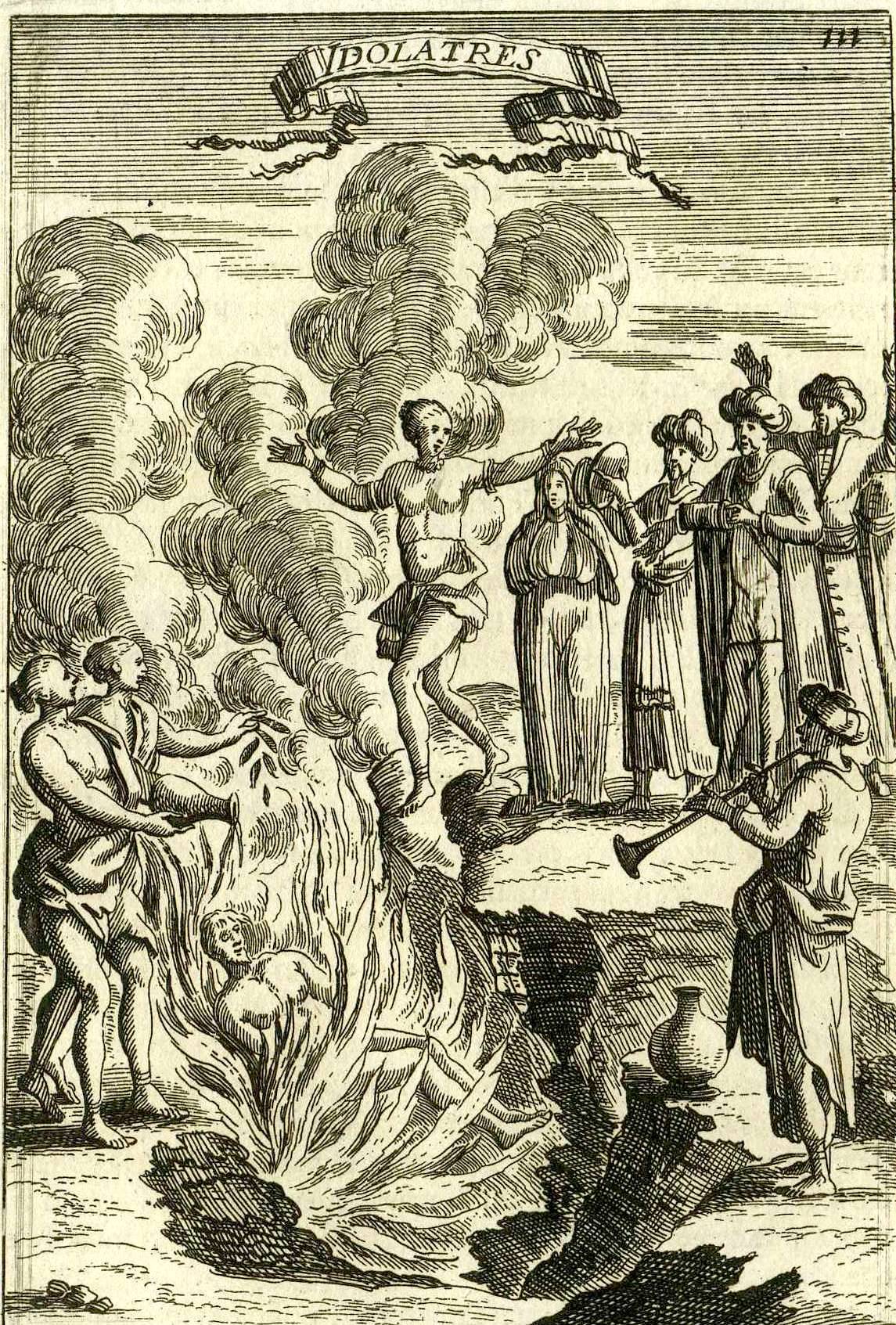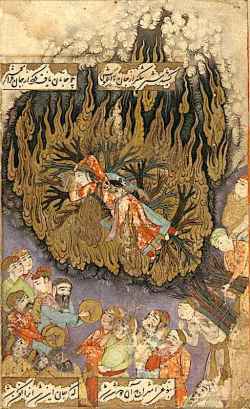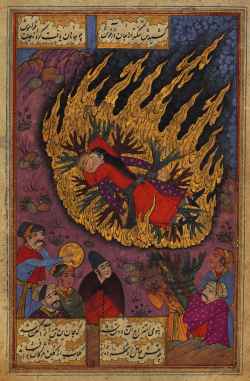Idolatres
Year: 1685
From: Allain Manesson Mallet, Description de l'Univers, , contenant les differents systêmes du monde, les cartes générals et particulières de la géographie ancienne et modern. Vol.: De l'Asie.
External link: commons.wikimedia.org
Topics:
2. Sacrifice and religion: Comparisons, Antiquarians, Anthropology (16th-18th Century) 7. Sacrifices of self: Martirology and Catholic global missions (16th-18th Century)
2. Sacrifice and religion: Comparisons, Antiquarians, Anthropology (16th-18th Century) 7. Sacrifices of self: Martirology and Catholic global missions (16th-18th Century)
Edited by: Chiara Petrolini, Elisa Frei
Related Documents:
An Indian Woman Burning (1780)
from: Moore, Voyages and Travels, 1780
London, Wellcome Collection
Sati Funeral Practice (1611)
from: Johannes Isacius Pontanus, "Rerum et urbis Amstelodamensium historia", Amsterdam, 1611, p. 189
Satī. The bride immolates herself on the funeral pyre (1657)
from: Isfahan, Iran
The Israel Museum, Jerusalem
Scene of a Sati, with a woman throwing herself into the flames amid a crowd playing trumpets. Above, a winged devil holds the banner with the book's title and the torch with which he lights the ritual fire. (1670)
from: Abraham Rogerius, Le Théâtre de l’idolatrie ou la porte ouverte, Amsterdam, Jean Schipper, 1670, title page
Satī, from a Sūz u Gudāz manuscript. The union of the couple on the pyre (1657)
from: Sūz u Gudāz ms, Iran, Walters Manuscript W. 649, fol. 19b (Burning and Melting)
The Walters Art Museum, Baltimore, Maryland






